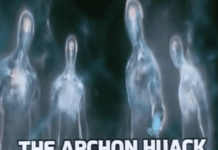
The Judengasse, the Jewish ghetto of Frankfurt am Main, Holy Roman Empire, was one of the earliest ghettos in Germany. It existed from 1462 until 1811 and was home to Germany’s largest Jewish community in early modern times. Initially, some 15 families with about 110 members lived in Frankfurt’s Judengasse when they were forcibly removed from the city and relocated to the ghetto by decree of Frederick III in 1462. Frederick III Holy Roman Emperor (1415 – 1493), a member of the Order of the Dragon also a member of the Order of the Garter, and married Eleanor de Aviz, Princess of Portugal, the daughter of Eleanor of Aragon, whose brother, Alfonso V King of Aragon and Naples, was a member of the Order of the Dragon. The central role of Frankfurt’s Jews in Jewish spiritual life is best illustrated in the Rabbinical Conference held in Frankfurt in 1603. Many of the most important Jewish communities in Germany, including Mainz, Fulda, Cologne and Koblenz, sent representatives to Frankfurt for this conference.
The most famous resident of the Judengasse was Amschel Mayer Bauer (1744-1812), who took on the name Rothschild to found the famous banking dynasty. The Rothschilds have been referred to as a “founding father of international finance,” and ranked seventh on the Forbes magazine list of “The Twenty Most Influential Businessmen of All Time” in 2005.[1] According to Rabbi Antelman in To Eliminate the Opiate, the Rothschilds were the true founders of the Bavarian Illuminati. The dynasty was founded by Amschel Mayer Bauer (1744-1812), who took on the name Rothschild, for “red shield” in German. According to Antelman, the Rothschilds were members of the Sabbatean sect known as the Frankists. Jacob Emden described a violent altercation that took place at his home with two defenders of the Frankists, one of them being Jacob Rothschild.[2]
 Rabbi Eybeshütz (1690 – 1764)
Rabbi Eybeshütz (1690 – 1764)
Rabbi Jacob Emden (1697–1776), a fierce opponent of the Sabbateans, is well known as a protagonist in the Emden-Eybeschütz Controversy, a momentous incident in Jewish history of the period, that followed the accusations against Rabbi Eybeshütz (1690 – 1764). As reported by Jewish historian Jacob Katz in Out of the Ghetto, a certificate held in the Schiff Collection at the New York Public Library, ranks Rabbi Eybeshütz as a successor of Sabbatai Zevi accofding to a list of ordination.[3] First to succeed him was Nathan of Gaza (1643 – 1680) who was anointed a prophet by Sabbatai Zevi. Next was Solomon Ayllon (1655 – 1729), his disciple and a Rabbi in London and Amsterdam where he tried to hide his Sabbatean leanings. Ayllon’s successor was Nechemiah Chiyon (1655 – 1729), who was excommunicated in several communities and wandered over Europe and North Africa. Chiyon ordained his successor Judah Leib Prossnitz in Moravia. Prossnitz was known as a Kabbalist and charlatan healer who confessed to sacrificing to the devil and demons, after which he was publicly banished into exile for several months. Following his ordination as successor to Zevi, after first proclaiming himself the Messiah, Judah Leib then passed on the title to Rabbi Eybeshütz (1690 – 1764).In 1751, Emden accused Eybeschütz of being a secret follower of Sabbetai Zevi, citing the evidence of some amulets written by Eybeschütz which contained Sabbatean formulas. In 1753, Eybeschütz was exonerated by the Council of the Four Lands in Poland, and his halakhic works remain in use today, despite strong suspicions among modern historians that Emden’s accusation may have been justified.[4]
 Jews gathered outside a synagogue in Fürth, Bavaria, on the Sabbath.
Jews gathered outside a synagogue in Fürth, Bavaria, on the Sabbath.
Although Emden did not approve of the Hasidic movement which evolved during his lifetime, his books are highly regarded amongst the Hasidim.[5] The “Hasideans” of the Bible, also known as Kasideans, are identified by the Freemasons with the Essenes, who hold a particular place of importance in the order. In The History of Free Masonry published in 1804, Alexander Lawrie, who is regarded as an excellent authority on Scottish Freemasonry, claims that the Kasideans—on the basis of the French historian Joseph Scaliger, who conducted research into early Jewish mystical sects—were descended from the Essenes. Scaliger, a friend of Isaac Casaubon and Guillaume Postel, utilized the Plantin press, which many historians have argued operated as a front for a kind of “pre-Freemasonry.”[6]
Like Casaubon, Scaliger owned a copy of the Sefer Hasidim.[7] Scaliger was involved in a debate with the biblical scholar Johannes Drusius (1550–1616) and the Jesuit Nicolas Serarius (1555–1609), where he asserted that the ancient Hasidaeans (Hasidim) became the Essenes. Scaliger believed the Therapeutae were a branch of the Essenes, and that the Hasidim were descended from them.[8] In Scaliger’s opinion, the Hasidaeans were not a sect, but an order or brotherhood, or a corporation “especially dedicated to the observance of the Law,” and whose origin dated back to the period of Ezra.[9] Citing Scaliger, Lawrie writes:
The Kasideans were a religious Fraternity, or an Order of the Knights of the Temple of Jerusalem, who bound themselves to adorn the porches of that magnificent structure, and to preserve it from injury and decay. This association was composed of the greatest men of Israel, who were distinguished for their charitable and peaceful dispositions, and always signalized themselves by their ardent zeal for the purity and preservation of the Temple. From these facts it appears, that the Essenes were not only an ancient fraternity, but that they originated from an association of architects, who were connected with the building of Solomon’s temple. Nor was this order confined to the Holy Land. Like the fraternities of the Dionysiacs, the Free Masons, it existed in all parts of the world; and though the lodges in Judea were chiefly, if not wholly, composed of Jews, yet the Essenes admitted into their order men of every religion, and every rank in life. They adopted many Egyptian mysteries; and, like the priests of that country, the Magi of Persia, an the Gymnosophists in India, they united study of moral, with that of natural philosophy. [10]
 Baal Shem Tov (1698 – 1760).
Baal Shem Tov (1698 – 1760).
The modern Hasidic movement began in Ukraine with Israel ben Eliezer (1698 – 1760), known as Besht, an acronym for Baal Shem Tov. Baal Shem, in Hebrew meaning “Master of the Name,” refers to a historical Jewish occupation of certain Kabbalistic rabbis with knowledge of using names of God in Judaism for practical kabbalah healing, miracles, exorcism and blessing. The Baal Shem wrote amulets and prescribed cures, and many miracles were attributed to him. Many of Baal Shem Tov’s disciples believed that he came from the Davidic line tracing its lineage to the royal house of King David, and by extension with the institution of the Jewish Messiah.[11] The Besht claimed to have achieved devekut (“adhesion”), meaning that his soul had reached the high level where he could speak with the Messiah, and intervene between humans and God. He had the ability to protect the Jewish community from plague and persecution. He believed that physical pleasure can give rise to spiritual pleasure. A physical act can become a religious act if it is performed as worship of God and the act is performed in a state of devekut.
Hasidism draws heavily on Lurianic Kabbalah. “One abiding legacy” of the Sabbatean controversies, explains Martin Goodman in The History of Judaism, “was the popularization of the language of the Lurianic kabbalah in common liturgy which we have already seen. That in turn was to shape the most lasting movement of the early modern period, Hasidism.”[12] Rabbi Nahman of Kosow—who had sided with Eybeschütz, and was also suspected by Emden of being a secret Sabbatean—became a committed devotee of the Baal Shem Tov.[13] Many scholars, including Gershom Scholem, see the roots of the Hasidic movement of Judaism within the Sabbateanism.[14] In Major Trends in Jewish Mysticism, Gershom Scholem defined Luranic Kabbalah, Sabbateanism, and Hasidim as three different stages in the same process of the historical development of Jewish mysticism, arguing that Hasidism was a direct reaction to the Sabbatean movement, and that its primary theological inspiration came from Lurianic Kabbalah.[15]
Although the Hasidic movement is regarded now as a part of Orthodox Judaism, it had often been condemned as heretical by traditional Jews. It was Rabbi Elijah ben Shlomo Zalman (~1720–1797), known as the Vilna Gaon, and those who followed his classic Talmudic and Halakhic scholasticism, who put up the fiercest resistance to the Hasidim. They were called Mitnagdim, meaning “[those who are] oppose/d [to the Hasidim].” The efforts of the Mitnagdim to suppress the Hasidim lasted for three decades, accompanied by written and oral denunciations, which described Hasidism as a deviant sect and sometimes even identified it with Sabbateanism.[16]
The kernel of truth to these accusations lay in the Hasidic doctrine which suggested that one should serve God not only with the “good impulses” but also with the bad.[17] This notion is quite similar to that sometimes cited in the context of Sabbateanism of “redemption via sin.”[18] This belief is linked with the Lurianic doctrine of the raising of the holy sparks (niẓoẓot), though Besht limited this concept to the salvation of the individual soul. Hasidim believed that the immanence of God in everything meant that even great evil or pollution had a spark of the divine hidden somewhere within it. The Hasidim took this to mean that one must not only redeem and raise the holy sparks from the hand of evil, but that it was imperative to correct and uplift the evil itself. As the Besht’s disciple and successor, Rabbi Dov Baer ben Avraham of Mezeritch, also known as the “Great Maggid,” explained it, since the evil once resided in the Godhead itself, it must have been good originally. if we can return it to the source, it will not only be cleansed of its evilness but its force will be added to the good of the Divine.[19]
The Maggid is regarded as the first systematic exponent of the mystical philosophy underlying the teachings of the Baal Shem Tov, and through his teaching and leadership, the main architect of the movement.[20] The Maggid’s inner circle of disciples, known as the Chevraia Kadisha (“Holy Brotherhood”), included Rabbi Shneur Zalman of Liadi—an adept in Isaac Luria’s system of Kabbalah, and the founder of the Chabad-Lubavitch branch of Hasidism—who contemporaries accused of being a Sabbatean.[21] Shneur Zalman was the son of Baruch, great-grandson of the mystic and philosopher Judah Loew ben Bezalel, the “Maharal of Prague.”[22] The name “Chabad” is a Hebrew acronym for Chochmah, Binah, Da’at (“Wisdom, Understanding, and Knowledge”), the top three Sephiroth of the Kabbalistic Tree of Life, below Keter (“Crown”). “Lubavitch” is the Yiddish name for the originally Belorussian village Lyubavichi, now in Russia, where the movement’s leaders lived for over a hundred years. The Zohar and the Kabbalah of Isaac Luria, are frequently cited in Chabad works.
Jacob Frank

Rabbi Eybeschutz’ son Wolf was an open follower of the Frankists.[23] Judah Leibes raises the possibility that the Baal Shem Tov, the founder of Hasidism, died in 1760 of sorrow over the conversion to Christianity of the Sabbatean sect known as the Frankists a year earlier, since he viewed them as an organ of the mystical body of Judaism.[24] The founder of the Frankists was Jacob Frank (1726 – 1791), originally Jacob Leibowicz. Jacob Frank is believed to have been born in Eastern Poland, now Ukraine, in about 1726 into a Sabbatean family. As a traveling merchant he often visited Ottoman Greece where he earned the nickname “Frank,” a name generally given in the East to Europeans. He also lived in Smyrna and Salonika where he was initiated into the Sabbatean Kabbalah by the radical Dönmeh circle that emerged from Osman Baba (Baruchya Russo). In 1755, he reappeared in Poland, gathered a group of local adherents and began to preach the “revelations” which were communicated to him by the Dönmeh in Salonika.
Frank claimed to come to rid the world of the Talmud and Jewish law, a law he regarded as oppressive. Frank rejected the Talmud in favor of the Kabbalistic Zohar. Frank claimed instead that the Redemption would be fulfilled through a reversal of the Torah, affirming that for the “Good Lord” to appear, it would be necessary to precipitate chaos.[25] As summarized by Aba Eban, Frank “taught a strange idea that God would not send a Messiah until the world had become as evil as it could possibly be. So, said Frank, it was his duty as a follower of Shabbetai Zevi to bring about a time of pure evil.”[26] Frank taught a doctrine of the “holiness of sin,” claiming that with the arrival of the messiah, everything was permitted. Among the more radical Frankists, explains Gershom Scholem, there developed a “veritable mythology of nihilism,” in which the new messianic dispensation “entailed a complete reversal of values, symbolized by the change of the thirty-six prohibitions of the Torah… into positive commands.”[27] Like the ancient Gnostics, they therefore indulged in orgiastic and sexually promiscuous and even incestuous rites. The Frankists, like the Dönmeh, each held sexual-religious rituals, ranging from wife-swapping to kissing the naked breasts of a girl as the embodiment of the Torah/Shekinah.[28]
As a consequence, the congress of rabbis in Brody excommunicated the Frankists, and made it obligatory upon every pious Jew to seek them out and expose them. The Sabbateans informed Dembowski, the Catholic Bishop of Kamieniec Podolski, Poland. The bishop took Frank and his followers under his protection and in 1757 arranged a religious disputation between them and the orthodox rabbis. The bishop sided in favor of the Frankists and also ordered the burning of all copies of the Talmud in Poland.
At this critical juncture Frank proclaimed himself as a direct successor to Sabbatai Zevi and Osman Baba, and assured his followers that he had received revelations from Heaven, which called for their conversion to Christianity. According to the story recorded in the hagiographic collection Shivhe ha-BeSh’T, the Ba’al Shem Tov, the founder of Hasidism, laid the blame for the eruption of the controversy on the orthodox Jewish establishment, and was “very angry with the rabbis and said that it was because of them, since they invented lies of their own.”[29] The Ba’al Shem saw Frank and his group as part of the mystical body of Israel and presented their baptism as the amputation of a limb from the Shekhinah: “I heard from the rabbi of our community that concerning those who converted [in Lwów], the Besht said: As long as the member is connected, there is some hope that it will recover, but when the member is cut off, there is no repair possible. Each person of Israel is a member of the Shekhinah.”[30]
As revealed in The Sayings of Jacob Frank, Frank warned his followers of immanent and violent persecution, and advised them of the need to adopt the “religion of Edom,” by which he meant Christianity, leading eventually to the adoption of a future religion called das (“knowledge”), to be revealed by Frank. The conversion to Christianity, however, was to serve as a means to achieve Christianity’s ultimate defeat. Frank, as the reincarnation of the patriarch Jacob, was destined to rise as Israel’s leader in its war against Edom. In 1759, negotiations for the conversion of the Frankists to Roman Catholicism were carried out with the higher representatives of the Polish Church. The baptism of the Frankists was celebrated with great solemnity in the churches of Lwów, with members of the Polish nobility acting as god-parents. Frank himself was baptized in 1759.
Black Madonna
 The Black Madonna of Częstochowa, Poland.
The Black Madonna of Częstochowa, Poland.
Despite their conversion to Christianity, the Frankists continued to be viewed with suspicion. Frank was arrested in Warsaw on February 6, 1760 and delivered to the Catholic Church’s tribunal. He was convicted of teaching heresy, and imprisoned in the monastery of Czestochowa, in southern Poland, which became home to the Frankism movement in the late eighteenth and the nineteenth century. The shrine of Our Lady of Czestochowa, with its miraculous “Black Madonna” icon of the Virgin Mary, was one of the most important centers of the Marian cult in the world and the most important religious site for all Roman Catholics in Poland. The icon, which was housed at the Jasna Gora Monastery in Czestochowa, has been intimately associated with Poland for the past 600 years. According to legend, the icon had been painted by Luke the Evangelist on a fragment of the table of the Last Supper and subsequently been brought to Constantinople from Jerusalem by Constantine the Great. Several Pontiffs have recognized the venerated icon, beginning with Pope Clement XI who issued a Canonical Coronation to the image on September 8, 1717, via the Vatican Chapter.
Frank was fascinated by the Czestochowa icon and the worship accorded to it by the pilgrims coming to the monastery. Frank appropriated Marian symbolism into his own teachings, equating the Black Madonna with the “Maiden”, the personification of the Shekinah, the divine feminine of the Kabbalah. Esoterically, the Shekinah of the Kabbalah, like the Virgin Mary and Fatima, the daughter of the Prophet Muhammad of Islam, is a stand-in for the ancient pagan goddess, usually referred to as Sophia, Greek for “wisdom.” The Virgin Mary has been crowned Queen of Heaven, described as the Woman of the Apocalypse with pagan symbolism in the Book of Revelation 12:1, “clothed with the sun, and the moon under her feet, and upon her head a crown of twelve stars.” According to J. B. Trend, in The Legacy of Islam, the goddess worship of the Sufis was reinterpreted within Christianity as the veneration of the Virgin Mary.[31] Egyptian depictions of Isis frequently displayed her holding her child Horus on her lap. Similarly, as reported by Ean Begg, author of The Cult of the Black Virgin, many statues of Mary holding her child—found all over Europe, though mainly clustered in the south of France—were black.
 Jasna Góra Monastery, n Częstochowa, Poland.
Jasna Góra Monastery, n Częstochowa, Poland.
Bernard de Clairvaux, the patron of the Templars, was also known to have visited several shrines of the Black Madonna, for example at Chatillon and Affligem. The twelfth and thirteenth centuries saw an extraordinary growth of the cult of the Virgin in Western Europe, inspired in part by the writings of theologians such as Bernard of Clairvaux. He identified her as the bride of the Song of Solomon, who pleads on her own behalf that, “I am black, but I am beautiful, O ye daughters of Jerusalem.”[32] The movement found its grandest expression in the French cathedrals, often dedicated to “Our Lady,” such as Notre-Dame de Paris and Notre-Dame de Bayeux among others.[33]
Fatima was given the title, al-Zahra, “shining one,” and Mohammed once said about her, “Thou shalt be the most blessed of all the women in Paradise, after Mary.” Surprisingly, besides attracting Christian pilgrims, the shrine at Fatima, Portugal, has also attracted Muslims in great numbers.[34] According to Traditionalist Iranian historian Seyyed Hossein Nasr:
[Sophia] has often manifested herself as a woman of celestial beauty and was identified by many sages and saints with the Virgin Mary in the same way that among some of the Muslim sages wisdom appeared as a beautiful celestial figure identified with Fatima, the daughter of the Prophet, and a “second Mary” within the more specific context of the Islamic tradition.[35]
As summarized by Pawel Maciejko, “Frankism was not about a male God who took a human body upon himself through a human woman, but about a feminine goddess who acquired a human form.”[36] For Frank, the Black Madonna of Czestochowa became not merely a depiction of the sacred femininity but the site of her actual “indwelling.” Frank’s coming to Czestochowa was “to liberate” the Maiden from the icon and thus to bring the revelation of divine femininity to accomplishment. As Frank announced, when this happened, the “Maiden who is there [that is, the miraculous icon] . . . will lead you [the Frankists] to another Maiden.”[37] The final and complete revelation of Frankism amounts to the true incarnation of the divine Maiden in a true human maiden: Frank’s daughter Eve. From the very outset, Frank presented her as a semi-divine being and a future leader of the group.
Frankism
 Maria Theresa, Holy Roman Empress.
Maria Theresa, Holy Roman Empress.
These Frankists were at the forefront of the revival of Catholic mystical and devotional practices centered on Our Lady and the Eucharistic Lord such as the Rosary, novenas, devotion to the Sacred and Immaculate hearts, Benedictions, the forty hours devotions and Perpetual Eucharistic adoration. Devotion to the Sacred Heart developed out of the devotion to the Holy Wounds, in particular to the Sacred Wound in the side of Jesus, The Five Holy Wounds or Five Sacred Wounds are the five piercing wounds Jesus suffered during the Crucifixion. These practices grew from the influence of Saint Bernard of Clairvaux, patron of the Templars, and Saint Francis of Assisi, who according to Steven Runciman was influenced by the Cathars.[38] Devotion to the Sacred Heart of Jesus marked the spirituality of Saint Bernard of Clairvaux in the twelfth century and of Saint Bonaventure and St. Gertrude the Great in the thirteenth.[39] This devotion was strongly opposed in and out of the Church and suppressed in many places.
Following his release, Frank and his entourage relocated to Moravia, and in particular to the city of Brünn, where a Sabbatean stronghold had remained, and which was closely connected to the local nobility. Accompanied by his daughter Eve, Frank repeatedly traveled to Vienna and succeeded in gaining the favor of Empress Maria Theresa, the last of the House of Habsburg who regarded him as a disseminator of Christianity among the Jews.[40] Ultimately, Frank was deemed unmanageable and he was forced to leave Austria. He and his circle of followers moved to Offenbach, Germany, beginning in 1786. Assuming the title of “Baron of Offenbach,” he adopted a style of regal opulence, receiving financial support from his Polish and Moravian followers, who made frequent pilgrimages to him. Frank died in Offenback in 1791, after which Eve became the “holy mistress” and leader of the sect. In November 1813, after the battle of Leipzig, Tsar Alexander I, then emperor of Russia, rode from Frankfurt to Offenbach to visit Eve.[41]
 Jacob Frank on his deathbed, 1791.
Jacob Frank on his deathbed, 1791.
The Frankists scattered in Poland and Bohemia eventually intermarrying into the aristocracy and middle class. Maria Szymanowska, a piano virtuoso, came from a Frankist family.[42] Wanda Grabowska, the mother of Tadeusz Boy-Zelenski, also descended from Frankists.[43] The greatest men of Poland Frédéric Chopin, Adam Mickiewicz and Juliusz Słowacki, were also reportedly descendants of the Frankist sect.[44]
The baptized Catholic Frankists followed the other daughters of Frank from his first marriage, whose leadership became based in Italy, Spain and Ireland where they contributed to a mystical, liturgical and devotional renewal of Catholicism. The Frankists who went to Ireland were to bring this intense Marian focus with them and under the Papal Frankist priests, Bishops, nuns and laity they inaugurated a new era of Marian fervor in Irish Catholicism. It was the hidden Frankists in the Church of Europe that pushed for the dogmas of the Immaculate Conception and Papal infallibility. Frankist women were prominent in the Sisters of Mercy, Sisters of Charity and Presentation Sisters. They guarded the maternal Jewish lineage assuring that their sons married women of Frankist families.[45]
The first wave of European Frankists came to Ireland in 1761 after the arrest and imprisonment of Jacob Frank in Czestochowa in late 1760. Many of them were members of Frank’s family. They mixed with the already existing crypto-Jewish community of Ireland. It is only with this Frankist conversion that these crypto-Jewish families became truly Catholic. The Frankist families took Irish names and identity. Some of the names were Murray (Murzynski), Cullen (Cohen), Murphy (Morpurgo), O’Connor/ Connor (Kinnor/ Konarski), Kinsella (Kaplinski), Maher (Mayer), Doyle (D’Oliveira), McCabe (Maccabi), Lynch (Luntz), Flood (Folda), Brennan (Brainan), Lavin (Zaslavski), Carroll (Karlin), Nolan (Nolen), Neill (Nehlhans), Walsh (Wolowski) etc.[46]
Eva Frank had six half-sisters from her father’s first marriage, Rachel Chayah, Dinah Ruth, Esther Matrona, Rivka Shoshana, Miriam Hannah, Leah Golda and Sarah Judith. Miriam Chana married David Menke Kinnor in 1756. Dinah Ruth married Stanilaus Rostowski, a Frankist descendant of the Sabbatean teacher Rabbi Baruchiah Russo. They moved to England then Scotland where they embraced the Presbyterian faith. Rivka Shoshana married in 1754 to Nathan Mayer of Frankfurt, and they moved to Ireland in 1760/61 where they took the names William and Annie Maher. In 1760, Leah Golda Frank married in Poland to Edmund Roche of Ireland. Edmund returned to Poland regularly to visit Jacob at Czestochowa and he returned in 1773 to live in Frank’s court. Sarah Judith Jacob married in Ireland in 1763/4 to John Cassin (a.k.a. Frances John Kissane) of Dublin and Kerry a son of a merchant and crypto-Jewish Rabbi.[47]
The father of Daniel Murray, the Archbishop of Dublin, was Tam (Tomek) Muzynski (Thomas Murray), who came to Ireland with his brother Pinchus (Piotr) Murzynski (Patrick Murray) with their wives Judith and Honaria Maher, the sisters of Nathan Mayer. Daniel Murray ordained to the priesthood two of the Murphy (Morpurgo) family, Francis and Daniel Murphy who were to become Australian Archbishops. Nathan Mayer’s daughter Catherine Maher married the Frankist Peter (Isaac) Leon Morpurgo, the son of Rabbi Elia Hayyim Morpurgo of Italy. Peter took the name of Peter Murphy in Ireland. Another daughter of Nathan Mayer was Miriam Mayer (Mary Maher), who married David Kinnor (David Connor) the Frankist son of Daniel Menke Kinnor (Harf) and his wife Chana Loeb. David and Mary Connor were the parents of two American Bishops, Bishop Michael O’Connor and Bishop James O’Connor of Omaha, Nebraska. Bishop Michael O’Connor was instrumental in the wording of the dogma of the Immaculate Conception in 1854.[48] The Immaculate Conception, according to the teaching of the Catholic Church, is the conception of the Blessed Virgin Mary free from original sin by virtue of the foreseen merits of her son Jesus Christ.
Another son of Joseph Mayer and Hannah Rothschild was Pinchus Mayer (aka Patrick Mayer). His daughters Mary and Judith married into the Frankist Cullen (Cohen) family. Mary married Hugh Cullen, the father of Paul Cullen, the first Cardinal of Ireland. Hugh’s mother belonged to the Kaplinski (who took the Irish name Kinsella in Ireland) family who were close relatives of Jacob Frank’s second wife Chana. Under the Frankist Irish Bishops culminating in the work of Hugh’s son, Cardinal Cullen, Irish Catholicism was transformed in what has been termed the “Irish devotional revolution.”[49] Cullen took part in the definition of the dogma of the Immaculate Conception and crafted the formula for papal infallibility at the First Vatican Council. His relatives, friends, and students, referred to as “Cullenites,” exerted great influence overseas, with Patrick Francis Moran, archbishop of Sydney, one notable example.[50]
Baal Shem of London

Rabbi Samuel Jacob Falk (1708–1782)
Rabbi Samuel Jacob Falk (1708 – 1782), a Kabbalist known as the Baal Shem of London, was linked by some illuminist Masons to Jacob Frank.[51] Falk was born in Poland to a Sabbatean family and came to England in 1742 and set up shop on the old London Bridge.[52] In Westphalia, Falk was sentenced to be burned as a sorcerer, but escaped to England. Falk rapidly gained fame as a Kabbalist and worker of miracles, and many stories of his miraculous powers were current, which he was reputed to exercise through his supposed mastery of the magical names of God.
Falk kept a diary containing records of dreams and the Kabbalistic names of angels, which can be found in the library of the United Synagogue in London.[53] The following is a summary provided in the Jewish Encyclopedia:
Falk claimed to possess thaumaturgic powers and to be able to discover hidden treasure. Archenholz (England und Italien, I. 249) recounts certain marvels which he had seen performed by Falk in Brunswick and which he attributes to a special knowledge of chemistry. In Westphalia at one time Falk was sentenced to be burned as a sorcerer, but escaped to England. Here he was received with hospitality and rapidly gained fame as a Cabalist and worker of miracles. Many stories of his powers were current. He would cause a small taper to remain alight for weeks; an incantation would fill his cellar with coal; plate left with a pawnbroker would glide back to his house. When a fire threatened to destroy the Great Synagogue, he averted the disaster by writing four Hebrew letters on the pillars of the door.
Dr. Hermann Adler, the Chief Rabbi of the British Empire from 1891 to 1911, observed that a horrible account of a Jewish Kabbalist in The Gentleman’s Magazine of September 1762, “obviously refers to Dr. Falk, though his name is not mentioned.”[54] This Kabbalist is described as a christened Jew and the biggest rogue and villain in all the world,” who had been imprisoned everywhere and banished out of all countries in Germany.” The writer goes on to relate that the Kabbalist offered to teach him certain mysteries, but explained that before entering on any “experiments of the said godly mysteries, we must first avoid all churches and places of worshipping as unclean.” He then bound the writer to an oath and proceeded to tell him that he must steal a Hebrew Bible from a Protestant and also procure “one pound of blood out of the veins of an honest Protestant.” The writer therefore robbed a Protestant, and had himself bled of a pound of blood, which he gave to the sorcerer. He then describes the ceremony that took place, when the following night they went into the writer’s garden, and the Kabbalist put a cross, painted with the blood, in each corner, and in the middle a threefold circle. The, all in blood, in the first circle were written all the names of God in Hebrew; in the second the names of the angels; and in the third the first chapter of the Gospel of John. He then described the ritual sacrifice of a he-goat.
Rabbi Jacob Emden accused Falk of being a Sabbatean, as he invited Moses David of Podhayce, a known Sabbatean with connections to Jonathan Eibeschutz, to his home.[55] Falk collaborated with a Sabbatean Frankist network in England, Holland, Poland, and Germany, and who would exercise an important influence in Masonic and occult circles during the eighteenth century.[56] Some Masons believed that Falk was the “Old Man of the Mountain”—the traditional name of the leader of the Ismaili Assassins—or an “Unknown Superior” of illuminist Freemasonry.[57]
Source: https://ordoabchao.ca
Disclaimer: We at Prepare for Change (PFC) bring you information that is not offered by the mainstream news, and therefore may seem controversial. The opinions, views, statements, and/or information we present are not necessarily promoted, endorsed, espoused, or agreed to by Prepare for Change, its leadership Council, members, those who work with PFC, or those who read its content. However, they are hopefully provocative. Please use discernment! Use logical thinking, your own intuition and your own connection with Source, Spirit and Natural Laws to help you determine what is true and what is not. By sharing information and seeding dialogue, it is our goal to raise consciousness and awareness of higher truths to free us from enslavement of the matrix in this material realm.
 EN
EN FR
FR





























I want to say, this is a hard read. Anyone who doesn’t have a clue of these characters is lost! My frustrations lay within, remind me of the difference between Race & the Cultures within them. It amazes me how deviant humans can be & claim “the know how” & turn it into a religion, in turn, turn it into a way of life. The writings here (no fault of the writer) should remind us all these clowns are not above us & their “inventions” of their own deviant thoughts has really f u c k e d up the world. I have in my 57 years of life been in proximity of these type of clowns. (because they bled into society of all peoples cultures through borders & intermarriage) I am lucky that I have had a good sense & relied on my gut feelings dating back to when I was 10 & continued to through my years of childbearing. I have always known when one of “them” was nearer. I feel strongly it is time to reinforce all Borders & for all Races to go back to be proud of who they are as a people.
I have a problem with this Video incorporating the Swastika flag, this “Thing” is much older then 1666. & The fact it was Hitler’s Germany/The Third Reich that was fighting these Beast. The Fuhrer explains, June 7, 1942, speaking to Reichsleiter Bormann, “Under the Weimer Republic, treason assumed such proportions that even military secrets were published in the press. Germany in 1925, they left behind them an organized Intelligence Service & spying ring, which not only rendered their further presence redundant but, in the opinion of military attaches accredited to Berlin, has also functioned to their complete satisfaction ever since. I was again & again infuriated by the state of moral degeneracy which alone made possible the setting up of this gigantic spy ring in Germany & which found expression in the most blatant & shameless form of treason. Alas, as that time I could do more then cause a list to be drawn up for all these traitorous elements, so as to be in a position, after assumption of power by Nationalist Socialist Party, at least to punish these Blackguards as they deserved. That we got rid of the majority of this riff raff in 1933 without having to do much, is do to the fact that no fewer then 65,000 citizens of the State fled the country as soon as we came into power. I admit we did not know exactly what misdemeanor each individual had committed.” July 5, 1942, Commenting to the Swedish & Swiss Press, as well as Britain & America, “These very important facts have been largely overlooked in Britain because the country is ruled not by men of intelligence but by Jews. One of our most important tasks will be to save future generations from a similar political fate & to maintain forever watchful in them knowledge of the menace of Jewry. For never has the menace of Jewry been so convincingly portrayed as in this presentation of what happened in the times of the Romans. The same thing occurred in Greece at the height of her power. It is because in the fourth century these Jewish Christians systematically destroyed all the monuments of these ancient civilizations. It was they who destroyed the Library at Alexandria.”